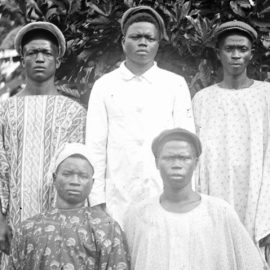

This article is an excerpt from the Shortform book guide to "Caste" by Isabel Wilkerson. Shortform has the world's best summaries and analyses of books you should be reading.
Like this article? Sign up for a free trial here .
What is endogamous marriage? What role does endogamy play in preserving the social structure in a caste society?
Endogamous marriage is the practice of marrying within one’s own group or social unit. In the context of racial casteism, endogamous marriage is one of the means of protecting the dominant caste’s bloodline and maintaining the caste structure.
Read about the practice of endogamous marriage, its history, and the lasting effects of endogamy laws.
What Is Endogamous Marriage?
Endogamy is the restriction of marriage to only those from the same caste. The purpose of endogamous marriage is to protect the dominant caste’s bloodline and emphasize the differences between the different castes. When families are isolated according to caste, a person’s interest or investment in the lives of other families diminishes. In not sharing the landscape of love and family building, members of the dominant caste have little reason to be concerned about the happiness and satisfaction of the lowest caste’s livelihood. In fact, outlawing love and marriage between the castes pushed the lowest caste further into the role of different, other, or less than.
Endogamous marriage is controlled race breeding. The bans on relations among castes enable the dominant caste to curate the type of population they want.
The Beginnings of American Endogamy
In 1630 colonial Virginia, a man from the dominant caste was publicly whipped for having an intimate relationship with a woman from the subordinate caste. What was interesting was that European men had taken liberties with African women for decades. Slave owners believed that pleasuring themselves with lower-caste women was part of their legal rights. Therefore, the action against the man wasn’t simply about relations with an African woman, but the manner in which he’d treated her. Rape and abuse of subordinate women was allowed. Tenderness, respect, and the appearance of equality was not.
In 1691, Virginia officially outlawed interracial marriage, becoming the first colony to do so. Over the next 300 hundred years, 41 of the 50 states followed suit. Marriage between castes was banned, and the punishment for anyone who broke this law was a $5,000 fine or 10 years in prison. Some states even added a provision that no law could ever be passed to overturn the marriage ban.
The Lasting Effects
A Gallup poll in 1958 affirmed that the legacy of endogamy was firmly in place in America. Ninety-four percent of the dominant caste stated their disapproval of marriage between different races. Even so, in 1967, the Supreme Court finally revoked the endogamy laws, but not all states complied with the federal mandate. Alabama continued to ban interracial marriage until 2000, and the measure to overturn the ban was passed with only 60% of the vote.
An unknown number of people suffered horrific abuses and death because of endogamous marriage laws. The punishment against lower caste men was most often lynching, but women from the dominant caste were also severely punished for their actions against the laws. In the reverse relationship between a dominant caste man and lowest caste woman, only the woman was punished. The double standard showed that dominant caste men were free to do whatever they wanted with whomever they wanted at any time without punishment.
This dominant male power has reared its head again and again throughout America’s history. For instance, in 1830, a black man was tortured and murdered after he killed a white man who continually raped his wife. In 1943, a 15-year-old boy was hog-tied and drowned in a river while his father was forced to watch at gunpoint. The boy’s crime was sending Christmas cards to his coworkers at a dime store in Florida. He’d signed the card to a teenage white girl with an “L” for love.
No one thought twice about the legality of the death in 1830, but by 1943, the NAACP tried to bring the guilty men to justice with the help of a young Thurgood Marshall. But neither a grand jury nor the prosecutors were willing to hold the men accountable, and no one was punished for the kidnapping and murder of the teenage boy.

———End of Preview———
Like what you just read? Read the rest of the world's best book summary and analysis of Isabel Wilkerson's "Caste" at Shortform .
Here's what you'll find in our full Caste summary :
- How a racial caste system exists in America today
- How caste systems around the world are detrimental to everyone
- How the infrastructure of the racial hierarchy can be traced back hundreds of years






